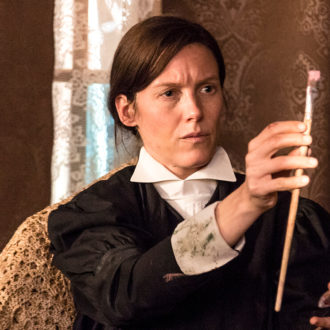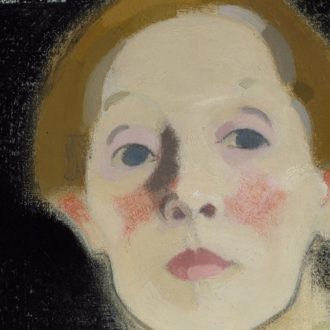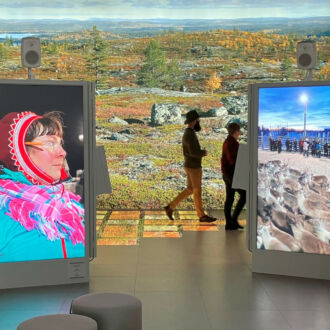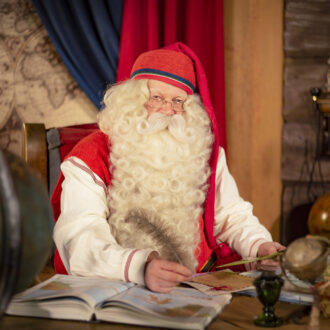In the art world, it doesn’t get more prestigious than a solo show at New York’s Metropolitan Museum. With Seeing Silence: The Paintings of Helene Schjerfbeck (December 5, 2025–April 5, 2026), the Met is staging its first-ever exhibition of a European woman painter born in the 19th century.
The extraordinary career of Helene Schjerfbeck (1862–1946) spans a fascinating journey, from the romanticism of the Golden Age of Finnish art to gripping self-portraits from the World War II era. She played a crucial role in the birth of Finnish modern art. In the 1880s, she spent time in France and England, and she continued to stay in touch with European art and fashion trends after her return.
“Schjerfbeck’s story is unique,” says Dita Amory, curator of the exhibition. “Living in Finland, far removed from the centres of cultural ferment in Europe, Schjerfbeck evolved her idiosyncratic brand of modernism without reference to other artists, experimenting in a new, radical language.”
[Editor’s note: The “schj” at the beginning of her name is pronounced like “sh” in English. It’s not a Finnish-language name; Schjerfbeck’s first language was Swedish, which is still one of Finland’s official languages.]
Distinct artistic language
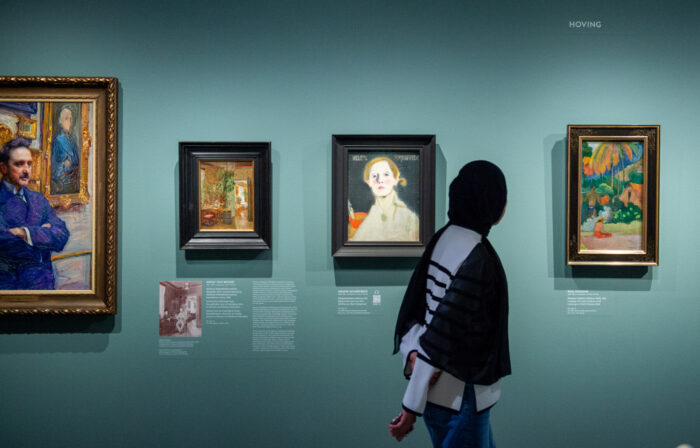
A visitor at Helsinki’s Ateneum Art Museum passes Helene Schjerfbeck’s Self-portrait, Black Background (1919), hanging beside a Paul Gauguin painting and others.Photo: Emilia Kangasluoma
Seeing Silence includes 59 works that “trace her entire career in discrete passages that reflect her changing artistic language,” says Amory.
Helsinki’s Ateneum Art Museum is loaning many of the paintings in the Met show, and Ateneum director Anna-Maria von Bonsdorff is serving as consulting curator. “Schjerfbeck is known internationally for having a very distinctive, signature style,” she says. “It’s interesting how she did those paintings, not just what they represent. She’s not just presenting an apple or herself or a simple view.
“She created a figurative modernism that concentrates on what’s most important and on artistic technical development. Schjerfbeck was interested in using different types of media and in reworking her paintings over long periods of time.”
While The Convalescent, which Schjerfbeck painted in her mid-20s, is among Finland’s most beloved paintings, “the modern part of her career is more interesting from a contemporary point of view,” says von Bonsdorff.
No-filter goblin mode
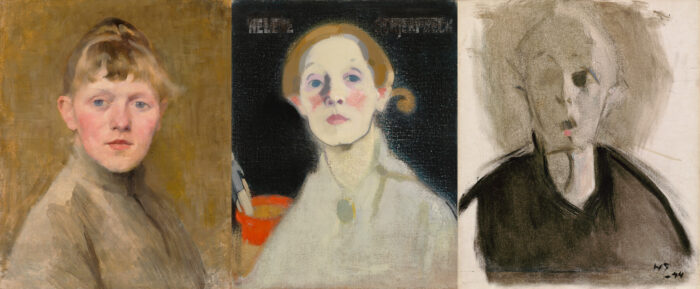
Schjerfbeck painted self-portraits throughout her lifetime with frankness and intensity. From left: Self-portrait (1884–1885), Self-portrait, Black Background (1919) and Self-portrait with Red Spot (1944).Photos: Jenni Nurminen, Hannu Aaltonen, Hannu Aaltonen/Finnish National Gallery/Ateneum Art Museum
The curators agree that the most fascinating Schjerfbeck works are her self-portraits, painted from her teenage years until just before her death at 83.
This extraordinary series mirrors the evolution of her style, from French-styled naturalism to stark, nearly abstract modernism with influences from Japanese art. Her endless, fraught variations on self-portrayal presage the selfie culture of our century, from idealised filters to brutally honest “goblin mode.”
“Her late self-portraits share a raw, self-reflective examination of pending death unlike anything seen anywhere else,” says Amory.
“People are really astonished by the frankness and the intensity,” von Bonsdorff says. “The late self-portraits are done with really forceful brush strokes. She put all her energy and concentration into doing them. Once you’ve seen those paintings, you never forget them.”
Von Bonsdorff has presented Schjerfbeck works in many settings, including a 2014 retrospective at the Schirn Kunsthalle in Frankfurt, Germany. Collaborating on the show was that museum’s director, Max Hollein. He’s been fascinated by Schjerfbeck ever since – and is now director of the Met.
“The idea for this exhibition came from Hollein, as Schjerfbeck is one of his favourite artists,” says von Bonsdorff.
Financial, medical and romantic setbacks
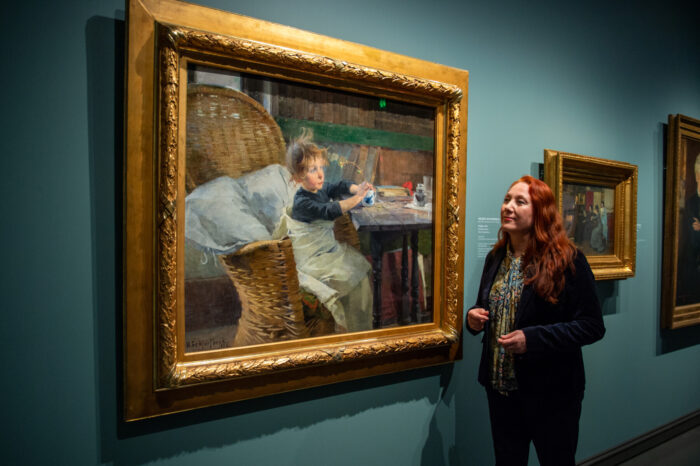
Anna-Maria von Bonsdorff, director of the Ateneum Art Museum and consulting curator for the Met’s Schjerfbeck exhibition, says The Convalescent (1888) represents only one facet of the artist’s wide-ranging career.Photo: Emilia Kangasluoma
The first major exhibition devoted to Schjerfbeck in the US “will be a revelation to Met audiences,” according to Amory. “They will find the very compelling story of Schjerfbeck’s life a fascinating introduction to a woman who painted for 80 years despite considerable adversity.”
That included financial, medical and romantic setbacks throughout her life, most of which was spent living with her mother, scraping by on a small pension.
Yet Schjerfbeck was fortunate to grow up in the Nordic region, where women enjoyed more opportunities for artistic education and expression than elsewhere in the 19th century. That’s evident in the recent array of major international exhibitions featuring her Nordic contemporaries Hanna Pauli, Harriet Backer and Hilma af Klint.
“Nordic women artists had a very different status compared to others in Europe, thanks to the educational system,” says von Bonsdorff. “Schjerfbeck was admitted as a student when she was 11 because she was so talented.”
Ateneum focused on that legacy in its exhibition Crossing Borders: Travelling Women Artists in the 1800s (through August 24, 2025), presenting 19th-century women artists who paved the way for Schjerfbeck and other early modernists such as Ellen Thesleff, herself the subject of a future Ateneum exhibition.
“It’s about time that we privilege these overlooked artists, whose art is as fine in every way as their male counterparts,” says Amory.
By Wif Stenger, July 2025
